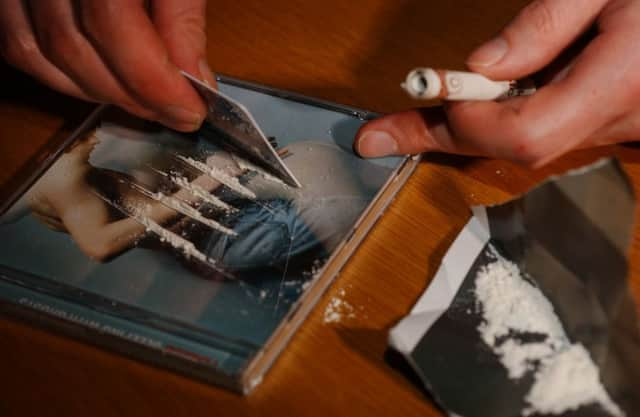What is the value of the illegal drugs market in Scotland?


The member for Tottenham said the UK’s illegal drugs market was worth £11bn, with London at its centre.
That figure was based on a National Crime Agency report which estimated the cost to the UK of trafficking as £10.7 billion per year.
Advertisement
Hide AdAdvertisement
Hide AdHowever, that amount referred to the overall cost to taxpayers from court cases, NHS treatments, and crimes committed by addicts.
The value of the market, UK-wide, is estimated by the Home Office to be £5.3bn.
But how much is the market in Scotland worth in comparison? Arriving at a precise figure is difficult.
Dealers operating in an industry that can lead to stiff prison sentences if caught are unlikely to publish accounts.
Similarly, many of those who consume proscribed substances are unlikely to volunteer information on their habits.
While we have a range of statistics on Scots’ drinking habits - from litres consumed to times of the day that purchases spike - drug consumption is altogether murkier.
What we can say is that there remains a substantial demand for banned substances.
A study published in 2009 provided both estimates of the size and value of the drugs market and estimates of the social and economic cost of drug use in Scotland for the year 2006.
Advertisement
Hide AdAdvertisement
Hide AdIt placed the total value of the illicit drugs market at around £1.4bn - the total spent by around 55,000 Scots.
The cost of this drug use to the Scottish tax payer was estimated at around £3.5bn.
Heroin held the largest share of the market with 39 per cent of the market, with cannabis holding a 19 per cent share, the second largest. Problem drug users held the largest percentage share of the total market at 63 per cent.
Since that report was published, all recent surveys of the general population have found a reduction in the prevalence of drugs use among adults between 2008 and 2015.
But problem drug use north of the border remains disproportionately high compared to England and other European countries.
Surveys of the general population can provide estimates of the prevalence of drug use, but as Scottish Government researchers have noted, “it is important to recognise that bias may be introduced by under-reporting or non-response” - meaning the number of drug users may be far higher.
Not everyone who purchases banned substances is a problem user. They may smoke cannabis on a social basis, or perhaps buy cocaine to share at a house party with others.
Obtaining reliable statistics on the number of Scots with recreational habits is - as one police officer puts it - as likely as buying a ticket to the Moon.
Advertisement
Hide AdAdvertisement
Hide AdDrug seizures offer some insight - although the quantity can fluctuate considerably each year and does not necessarily move in line with the number of seizures made.
For crimes of drug supply, the main Class A drugs seized by Police Scotland in 2016-17 were heroin (54.1 kilograms, a drop from 74 kilograms the previous year) and cocaine (120.3 kilograms).
A Scottish Government spokesman said: “We continue to tackle the damaging impact of drugs in Scotland and we have seen drug use falling in the general population.
“We are committed to doing everything we can to tackle the scourge of illegal drugs by applying the full force of the law to hit the dealers who cause misery that blights the lives of so many, while supporting those living with an addiction.”